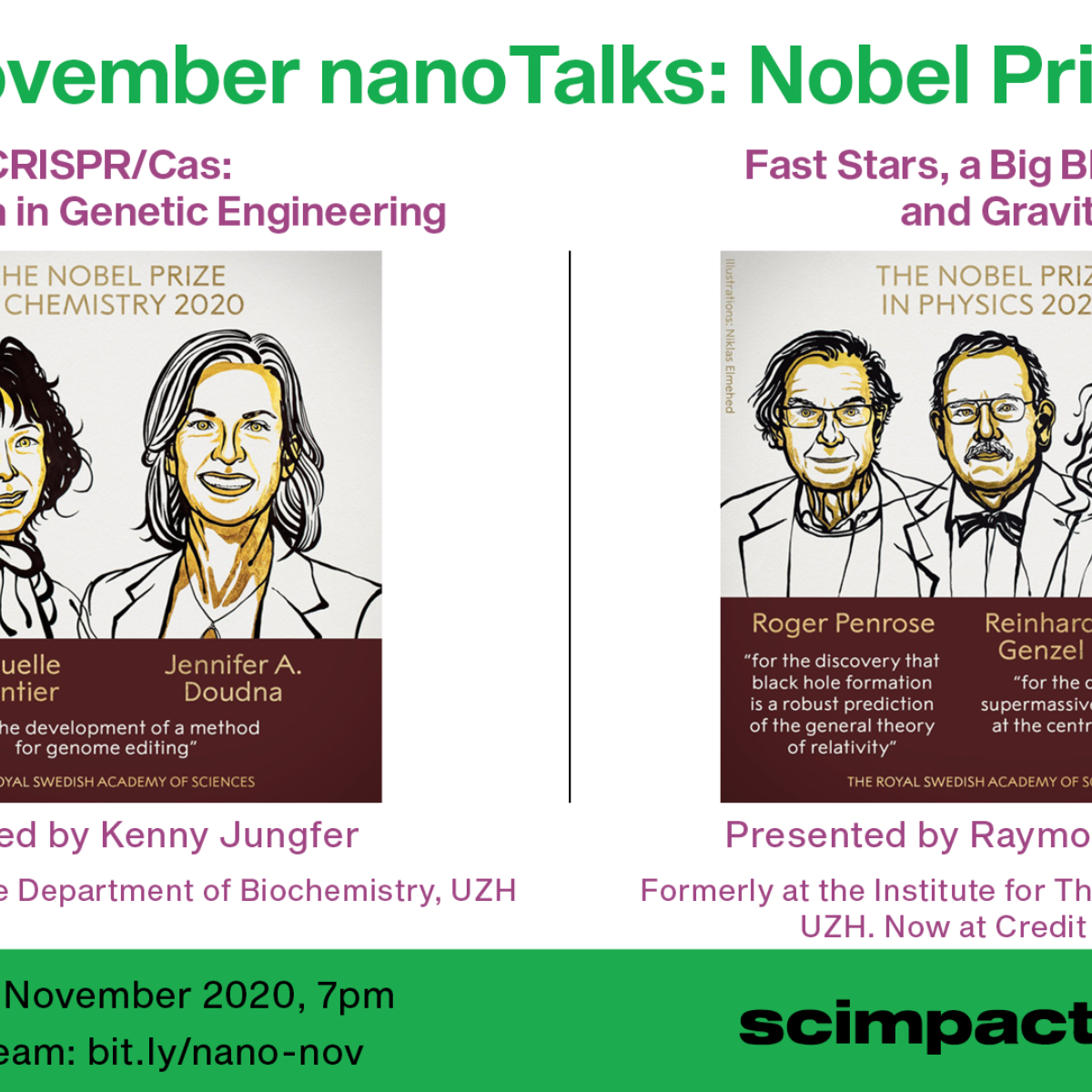
November nanoTalks: Nobel Prizes
Join our nanoTalks in November and learn what is behind the 2020 Nobel Prizes in Chemistry and Physics. You will gain insights into CRISPR - today's leading gene editing technology - and the strongest confirmation of Albert Einstein's Theory of General Relativity.
26.11.2020
Online (YouTube)
Free

Free
Talk 1: Talk 1: CRISPR/Cas: A Revolution in Genetic Engineering
Presented by: Kenny Jungfer, PhD Candidate at the Department of Biochemistry, UZH
Genetic engineering was proven to be a powerful but challenging tool in basic research. In 2012, the discovery of CRISPR/Cas9 presented a quantum leap in the area.
In bacterial cells, the CRISPR-Cas system constitutes a host defense system protecting it from invading viral threats. Thereby, Cas9 functions as a genetic scissor that recognizes and destroys the DNA of viruses in a sequence-specific manner. Emmanuelle Charpentier and Jennifer A. Doudna were able to reprogram theCas9 scissor in a way that it can bind and cut nearly any DNA molecule,enabling the targeted deletion and rewriting of genetic information.
Today, CRISPR/Cas finds application in various fields, ranging from the genetic modification of model organisms in basic research to the design of novel therapeutics against inherited diseases. Due to their contribution to the development of this revolutionary technique, the 2020 Nobel Prize in Chemistry was awarded to Jennifer A. Doudna and Emmanuelle Charpentier. My talk will give you insights into the evolution of CRISPR/Cas from a bacterial defense system to today’s leading gene editing technology.
Talk 2: Fast Stars, a Big Black Hole, and Gravity
Presented by: Raymond Angélil, Formerly at the Institute for Theoretical Physics, UZH. Now at Credit Suisse
Until very recently, gravity, despite its ubiquity in everyday life (Newton’s falling apple as the canonical example), was the least understood of the four fundamental forces of physics. The work that resulted in the 2020 Nobel Prize has played a critical role in elevating our understanding of fundamental gravity to new levels.
Gravity becomes interesting only when gravitational fields are strong. On the Earth, even near the Sun, the gravitational field is still weak. Orbits of flying objects assume tame ellipses. Light follows straight lines. This is why it is difficult to perform tests which reveal the true nature of gravity - because things are still boring.
In the vicinity of a black hole, a type of collapsed star, the gravitational field is strong, and trajectories behave in strange ways. Studying the movements of objects near it, and the paths of light rays, reveals insights as to what gravity truly is.
The galactic center’s supermassive black hole, with stars which orbit it at a few percent of the speed of light, offer the ultimate playground for tests of gravity. The work that the recipients of the 2020 Nobel Prize have done over the past 20 years, through the astronomical observation of the movements of these stars, has resulted in one of the strongest confirmations of Einstein’s Theory of General relativity, and has solidified it against contender theories of gravity, as the strongest description of gravity at a fundamental level.